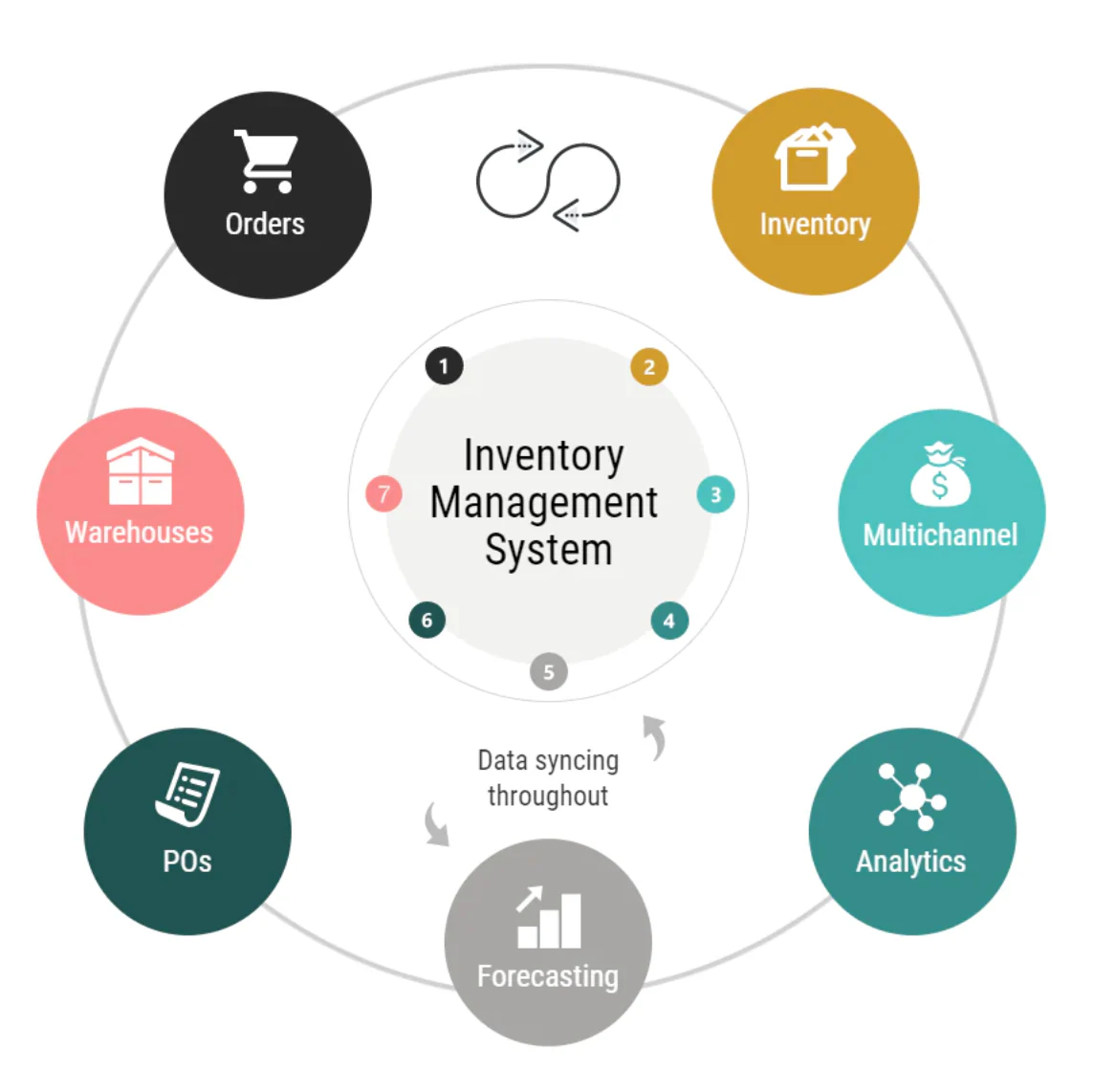Inventory System for Stock Visibility and Control
In today’s fast-paced and competitive business landscape, managing inventory efficiently is crucial to ensuring that products are available when needed while avoiding stockouts or overstocking. Inventory systems for stock visibility and control help businesses achieve this balance by providing real-time tracking, automated alerts, and seamless integration across various systems. These tools not only improve operational efficiency but also help businesses make informed decisions that enhance overall profitability.
In this article, we will explore how inventory systems can improve stock visibility and control, key features to look for in such systems, and the benefits they bring to businesses of all sizes.
Why Stock Visibility and Control Matter
What Is Stock Visibility?
Stock visibility refers to the ability to track and monitor inventory in real time across various locations, warehouses, and sales channels. It enables businesses to know exactly what items are in stock, where they are located, and how much is available at any given moment.
Why Is Stock Control Important?
Stock control is the process of managing and regulating inventory levels to ensure that stock is maintained at optimal levels. Proper stock control reduces the risk of running out of products (stockouts) or overstocking items, which ties up valuable resources and space. Effective control systems ensure products are available for sale without excessive investment in unsold goods.
How an Inventory System Improves Stock Visibility and Control
1. Real-Time Inventory Tracking
An effective inventory system provides businesses with real-time updates on stock levels, movements, and changes. Whether it’s a product being sold in-store, an online order being processed, or stock being transferred between locations, these systems give businesses instant visibility. This reduces the chances of making decisions based on outdated or inaccurate data.
2. Multi-Location Inventory Management
Many businesses operate across multiple locations, such as warehouses, retail stores, and distribution centers. An inventory system that allows businesses to manage stock across multiple sites provides visibility into stock levels at each location. This ensures that businesses can transfer stock where needed, prevent stockouts, and optimize overall inventory distribution.
3. Automated Stock Replenishment
One of the most valuable features of inventory systems is the ability to automate stock replenishment. These systems can predict when stock levels will drop below predefined thresholds based on historical sales data and seasonal trends. Automated alerts or orders to suppliers can be generated when it’s time to restock, reducing the likelihood of stockouts and overstocking.
4. Barcoding and RFID Integration
Inventory systems equipped with barcode scanning and RFID (Radio Frequency Identification) technology can track products in real time as they move through different stages of the supply chain. This allows for faster, more accurate stocktaking and eliminates the errors that occur with manual inventory counts. Barcoding and RFID scanning make it easier to identify products, track their movement, and ensure that stock levels are updated immediately.
5. Integration with Other Systems
Modern inventory systems can integrate seamlessly with other business systems, such as enterprise resource planning (ERP), order management, accounting, and e-commerce platforms. This creates a unified data environment where stock movements are tracked across all channels. Integrating with sales and order systems ensures that inventory levels are updated in real time, preventing errors like selling products that are out of stock.
6. Stock Alerts and Notifications
Automated stock alerts ensure that businesses are informed when their inventory is running low, allowing them to take timely action. Alerts can be customized to notify managers or purchasing teams when stock drops below a specific threshold, or when a particular product is approaching its expiration date. These alerts prevent stockouts and ensure that inventory levels remain optimal.
7. Demand Forecasting
Advanced inventory systems use historical data and predictive algorithms to forecast future demand. By analyzing past sales trends, seasonality, and external factors, these systems can predict when and how much stock will be needed in the future. This helps businesses plan their purchases more accurately, ensuring that they maintain appropriate stock levels to meet customer demand without over-ordering.
8. Reporting and Analytics
Inventory systems generate reports and analytics that provide insights into stock performance. These reports can show inventory turnover rates, stock aging, and reorder cycles, which help businesses assess their inventory performance. By identifying slow-moving items or overstocked products, businesses can make data-driven decisions to optimize their inventory control.
Key Features to Look for in Inventory Systems for Stock Visibility and Control
1. Real-Time Inventory Updates
The ability to track inventory in real time is a critical feature for maintaining accurate stock levels and providing visibility across multiple locations and sales channels.
2. Multi-Warehouse Support
For businesses with multiple warehouses, the ability to manage and track inventory across different locations is essential. The system should allow for the transfer of goods between locations while maintaining accurate inventory counts.
3. Barcode Scanning and RFID Capabilities
Barcode scanning and RFID technology help automate inventory tracking, reducing human error and speeding up processes such as stocktaking and order fulfillment.
4. Stock Alerts and Replenishment
Automated notifications and stock alerts help businesses maintain optimal inventory levels by automatically triggering restocking or reordering processes based on predefined thresholds.
5. Demand Forecasting and Analytics
Predictive analytics and forecasting tools help businesses plan for future demand and adjust their purchasing strategies, preventing stockouts and excess inventory.
6. Customizable Reporting
Customizable reports allow businesses to generate specific insights into inventory performance, helping to optimize stock levels, improve order fulfillment, and identify areas for improvement.
7. Integration Capabilities
Seamless integration with other business systems like ERP, accounting software, and e-commerce platforms ensures that all data is synchronized and accurate across different departments.
Benefits of an Inventory System for Stock Visibility and Control
1. Improved Operational Efficiency
By automating manual processes and offering real-time data, inventory systems improve the speed and efficiency of operations. Stock movement is tracked automatically, and stock levels are updated in real-time, reducing the need for manual intervention and the likelihood of errors.
2. Reduced Stockouts and Overstocking
Real-time visibility allows businesses to optimize stock levels, preventing stockouts that can lead to missed sales opportunities and overstocking that ties up valuable resources. Automated alerts ensure timely restocking, helping businesses maintain the right balance of inventory.
3. Better Decision-Making
Accurate data and detailed reports allow businesses to make informed decisions about inventory purchasing, sales strategies, and stock management. Demand forecasting tools help businesses plan ahead, ensuring they have the right stock on hand to meet future demand.
4. Enhanced Customer Satisfaction
With better control over stock availability, businesses can ensure that products are available when customers need them. Real-time updates help businesses fulfill orders quickly and accurately, improving customer satisfaction and loyalty.
5. Cost Savings
Optimized stock levels and reduced stockouts lead to lower operational costs. Businesses can reduce their storage costs by maintaining optimal inventory levels and avoid the costs associated with emergency restocking or expedited shipping.
Top Inventory Systems for Stock Visibility and Control
Here are some of the leading inventory systems that provide excellent stock visibility and control:
1. TradeGecko (QuickBooks Commerce)
TradeGecko offers real-time inventory tracking and seamless integration with e-commerce platforms and accounting tools. Its user-friendly interface and robust reporting features make it ideal for small to medium-sized businesses looking to improve stock control.
2. Cin7
Cin7 is a comprehensive inventory management system that offers multi-location support, real-time tracking, and seamless integration with major e-commerce platforms. Its forecasting tools and automation features help businesses manage their inventory efficiently across various sales channels.
3. Zoho Inventory
Zoho Inventory provides a cloud-based solution with real-time inventory tracking, multi-warehouse management, and barcode scanning capabilities. It also integrates with Zoho’s other business tools, making it a great option for businesses already using Zoho’s ecosystem.
4. Fishbowl Inventory
Fishbowl is a powerful inventory management system that offers real-time stock tracking, demand forecasting, and seamless integration with QuickBooks. It is designed for small to mid-sized businesses that need robust stock control across multiple locations.
5. Unleashed Software
Unleashed is an intuitive cloud-based solution designed for manufacturers and wholesalers. It offers real-time tracking, customizable reports, and advanced inventory control features, helping businesses manage stock levels across multiple locations.
Conclusion
Inventory systems for stock visibility and control are essential tools for modern businesses that want to improve operational efficiency, reduce errors, and provide better service to their customers. By leveraging features like real-time tracking, multi-location support, demand forecasting, and automated replenishment, businesses can optimize their inventory levels, ensure product availability, and make data-driven decisions to drive growth. Whether you’re managing a small warehouse or operating across multiple locations, investing in a robust inventory system will help you maintain control and keep your operations running smoothly.

